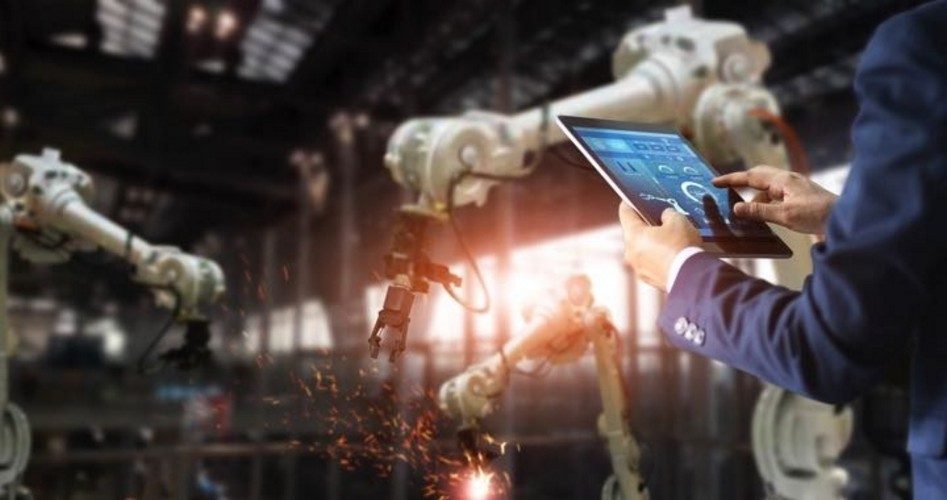
The report from the Brookings Institution released on Thursday drew lots of attention, most of it positive. Its conclusions were condensed into a single sentence: “Approximately 25 percent of U.S. employment (36 million jobs in 2016) will face high exposure to automation in the coming decades.”
In the past this was cause for much hand-wringing and calls for more government training for people working in low-skilled positions to prepare them for the brave new world of automation and artificial intelligence. Instead what is remarkable is how the U.S. economy is adapting to the changes taking place, and preparing for more of them in the very near future.
Kiosks are replacing order takers in half of the MacDonald’s restaurants. But instead of laying off employees, the workers are being trained to offer additional services to their customers, such as in-person delivery of orders to their tables.
Online grocery ordering is providing workers the opportunity to do the shopping for their customers, aided by robots telling them where the items are located that are being requested. Further, those robots continually scan the shelves for outages, which are then relayed electronically to the back room for restocking. This technology also allows unloading to take less time and be more efficient, placing items in convenient stacks for quicker restocking.
Those collecting online orders are testing new computer glasses that tell where the items desired are located so that they don’t have to use their smartphones. At present Walmart has 18,000 personal shoppers who fill online orders — jobs that didn’t even exist just a few years ago.
Short-haul autonomous trucks are freeing up drivers for other tasks, often higher paid. The Amazon Go store in Seattle is now fully operational after a year of testing by its employees. Shoppers enter by scanning their Amazon Go app at a turnstile, which opens the door. When an item is pulled from the shelf it is added to that shopper’s virtual cart. Shoppers have commented that it feels like stealing, until the bill appears on their phone as they leave.
Cooks in fast-food and fast casual restaurants are becoming more efficient as robots help prepare the meals. Matt O’Brien, reporting for AP News, explained how it works in a fast casual restaurant in Boston:
Push a touch-screen menu to purchase a $7.50 meal called “Hearth.” A blend of Brussels sprouts, quinoa, kale and sweet potatoes tumbles from hoppers and into one of the pots. The pot heats the food using magnetic induction, then tips to dunk the cooked meal into a bowl. Water jets up to rinse it off before a new order begins.
Hotels are going robotic with facial recognition technology being matched with robots carrying guests’ luggage to their rooms and giving advice on restaurants and near-by theatre showings. At Sheraton’s Waikiki resort, the staff is being trained on “Mobile Key,” which lets guests check in and gain access to their rooms without ever having to use a key card or speak to a check-in clerk at the front desk.
Where robots fail is with interpersonal relationships and judgments based on past experience. For instance, Best Buy has begun to offer a free in-home consultation service where sales people will sit with customers and make recommendations on setting up a home office or designing a home theatre system.
The fears generated by reports such as this from Brookings have largely been placated by the remarkable ability of the U.S. economy to adapt, and the laws of the free market to operate. New jobs always emerge to replace those that have been lost to technology. Automation raises worker productivity, which translates into lower costs and prices to customers for goods and services. Lower prices translate into higher demand, requiring more workers to fulfill it. Customers can now afford to buy more products than before, which then creates new jobs for workers to fill.
For proof, just check the latest unemployment claims for last week, which hit a low not seen in decades. If automation and artificial intelligence cost jobs, those claims should be increasing, but they aren’t. Instead of viewing the Brookings Institute’s report with foreboding, it should instead be considered as a positive harbinger for higher standards of living for everyone participating in the remarkable U.S. economy.
Photo: iStock / Getty Images Plus
An Ivy League graduate and former investment advisor, Bob is a regular contributor to The New American magazine and blogs frequently at LightFromTheRight.com, primarily on economics and politics. He can be reached at [email protected].



